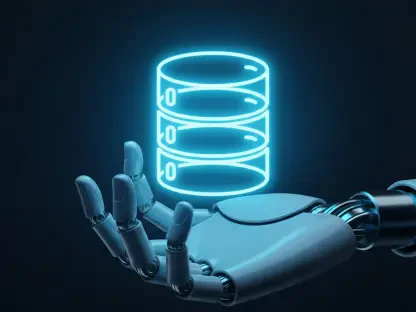I’m thrilled to sit down with Anand Naidu, our resident development expert who brings a wealth of knowledge in both frontend and backend technologies. With his deep insights into various coding languages and hands-on experience in integrating AI into software development, Anand is the perfect person to shed light on the transformative yet challenging role of AI in today’s software delivery lifecycle. In this conversation, we’ll explore how AI is reshaping coding speeds, the unexpected bottlenecks it creates, the risks of tool sprawl, and the critical need for balanced automation across development processes.
What inspired your team to begin integrating AI tools into the software development process?
Honestly, it started with a desire to keep up with the industry’s pace. We saw AI as a way to boost productivity and reduce repetitive tasks in coding. Our initial goal was to empower developers to focus on creative problem-solving rather than mundane syntax or boilerplate code. We expected faster turnaround times on projects and hoped it would give us a competitive edge in delivering features to clients quicker.
How did your team initially react to bringing AI into their daily workflows?
There was a mix of excitement and skepticism. Some developers were thrilled to experiment with AI assistants and see how they could streamline their work. Others were cautious, worried about over-reliance or the quality of AI-generated code. It took some time to build trust, and we had to encourage a mindset of using AI as a tool, not a replacement for critical thinking.
In what ways has the speed of code creation changed since adopting AI tools?
The speed has increased dramatically. Tasks that used to take hours, like drafting initial code structures or debugging simple issues, now happen in minutes. We’re able to iterate much faster during the early stages of development, which has been a game-changer for prototyping and getting feedback loops tightened up.
Have you observed a noticeable uptick in how frequently code is shipped to production as a result of this speed?
Yes, absolutely. We’re pushing code to production more often than before, sometimes multiple times a week compared to bi-weekly cycles in the past. However, that frequency doesn’t always translate to overall project velocity because other parts of the process, like testing and deployment, haven’t scaled at the same rate.
Can you explain what the ‘AI Velocity Paradox’ means based on your own experiences with AI in development?
The AI Velocity Paradox is something we’ve lived through. It refers to the idea that while AI speeds up code creation upfront, it can create bottlenecks downstream. We’ve seen cases where developers churn out code rapidly with AI help, but then we hit walls in testing or security reviews because those areas aren’t as automated or equipped to handle the increased volume. It’s like speeding down a highway only to get stuck in a traffic jam at the exit.
What specific challenges have emerged in testing, security, or deployment since using AI for coding?
Testing has been a big hurdle. The sheer volume of code generated means we’re often playing catch-up with test coverage, and AI-generated code sometimes introduces subtle bugs that are hard to catch without thorough manual review. Security is another concern—some AI tools suggest code that might have vulnerabilities, and our existing scans aren’t always tuned to detect those. Deployment also gets tricky because the faster pace exposes gaps in our automation, leading to delays or even rollbacks.
With many teams using multiple AI tools, how has managing several of them impacted your workflow?
We’re using around eight different AI tools across the team, and it’s definitely added complexity. Each tool has its own learning curve, integration quirks, and security considerations. Context switching between them can be draining for developers, and it sometimes feels like we’re spending more time managing the tools than leveraging their benefits. It’s a balancing act to keep everything cohesive.
How do you ensure security and compliance when dealing with a variety of AI tools?
It’s a constant challenge. We’ve implemented strict policies on data input to prevent sensitive information from being fed into external AI tools. We also conduct regular audits of the tools’ access permissions and outputs. On top of that, we’re working on centralized governance to monitor compliance across the board, but it’s still a work in progress to ensure nothing slips through the cracks.
How automated are the different stages of your software delivery lifecycle right now?
Coding is fairly automated, especially with AI assistance—probably around 50% of the repetitive tasks are handled by tools. But when you look at continuous integration or delivery, the automation level drops significantly. Deployment, in particular, still involves a lot of manual steps for validation and rollback procedures. There’s a clear disparity between the front end of development and the downstream processes.
What steps are you taking to bridge the automation gap in areas like testing or deployment?
We’re investing in AI-powered testing tools to try and match the pace of code creation. For deployment, we’re building more robust pipelines with automated checks and balances to reduce manual intervention. It’s also about training the team to prioritize automation in their workflows and advocating for budget to adopt tools that can integrate seamlessly across the entire lifecycle.
Have you encountered any production incidents or vulnerabilities directly tied to AI-generated code?
Yes, we’ve had a couple of incidents. One notable case was when an AI tool suggested a library with a known vulnerability that slipped past initial reviews. It made it to production and caused a minor security breach before we caught it. These experiences have made us more vigilant, but they also highlight how reliant we are on downstream processes to act as a safety net—something we’re still strengthening.
What is your forecast for the role of AI in software development over the next few years?
I think AI will become even more integral, evolving from a coding assistant to a full lifecycle partner. We’ll likely see advancements in AI-driven testing, security scanning, and deployment automation that address today’s bottlenecks. However, I also foresee a growing emphasis on governance and ethical use to mitigate risks like vibe coding or tool sprawl. If we can strike the right balance between speed and safety, AI has the potential to redefine how we deliver software, making it faster, smarter, and more resilient.









